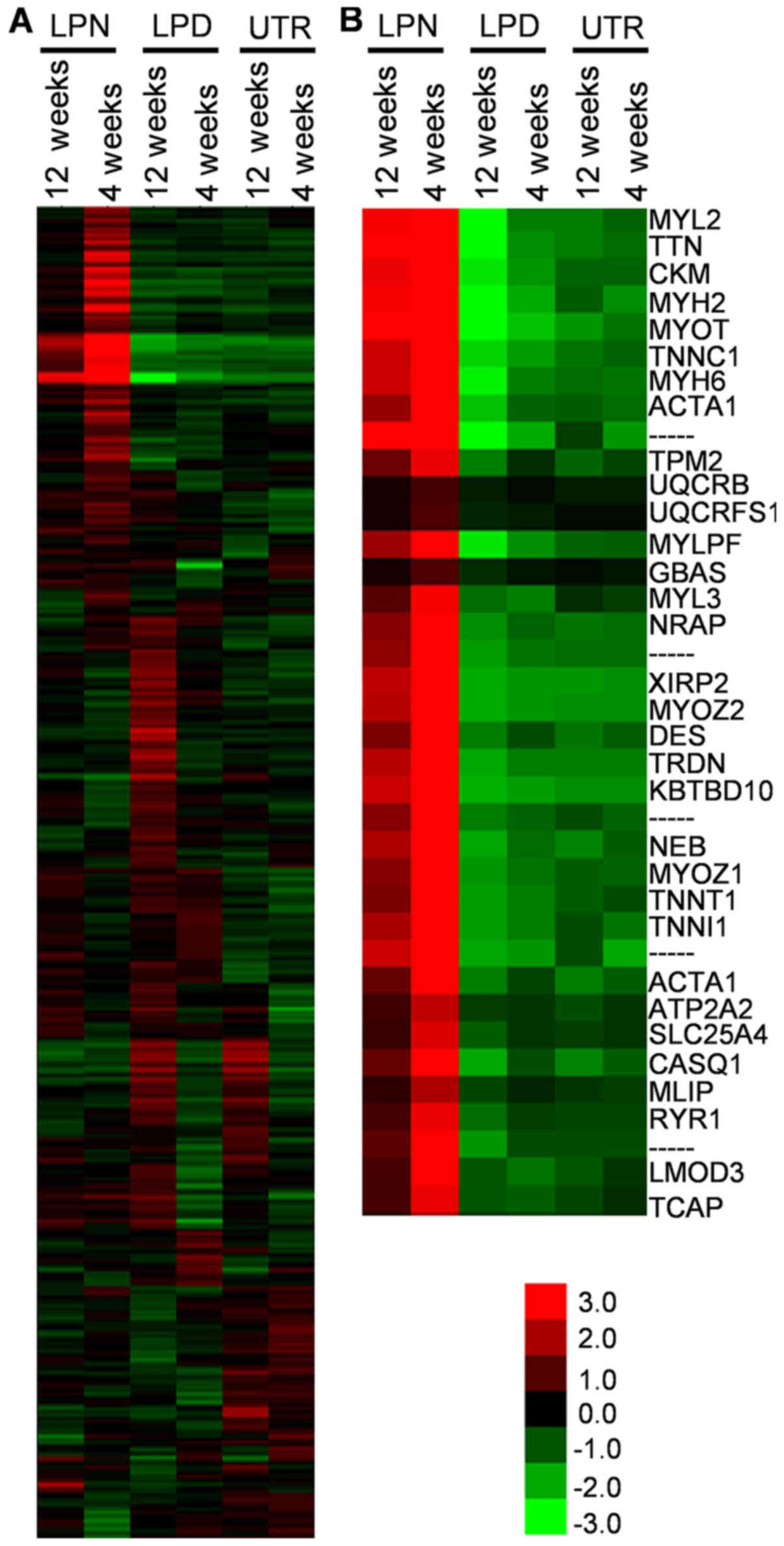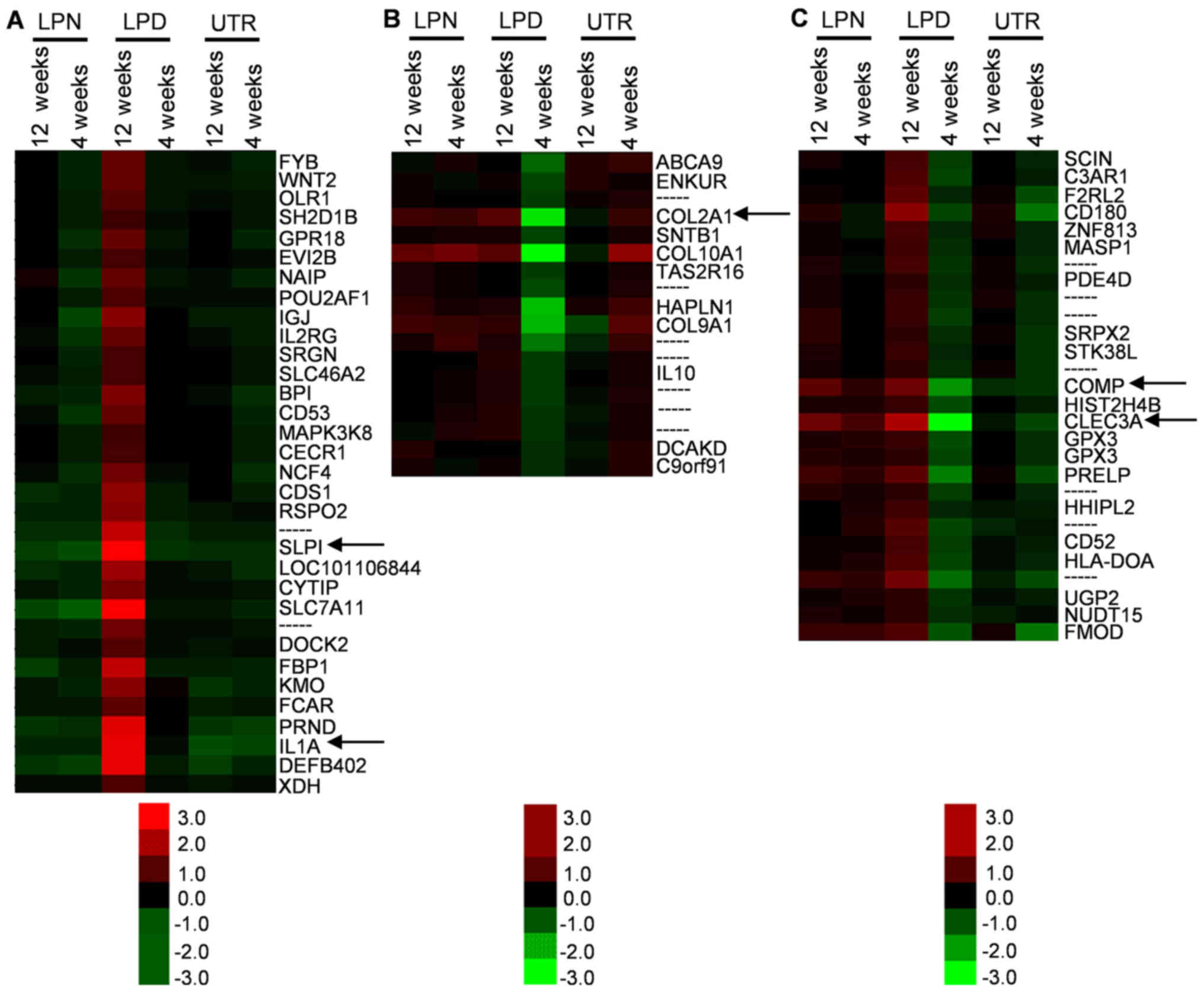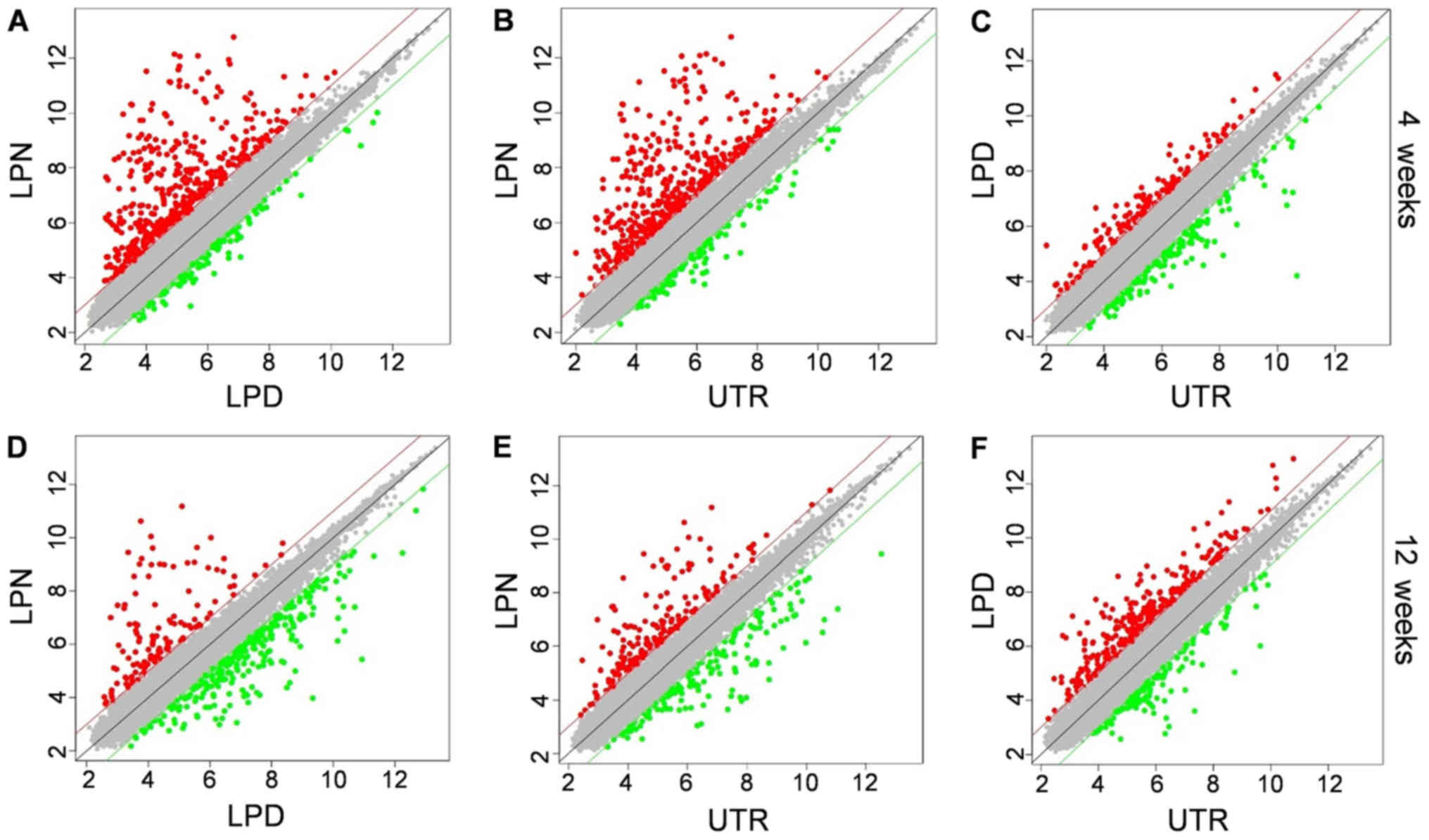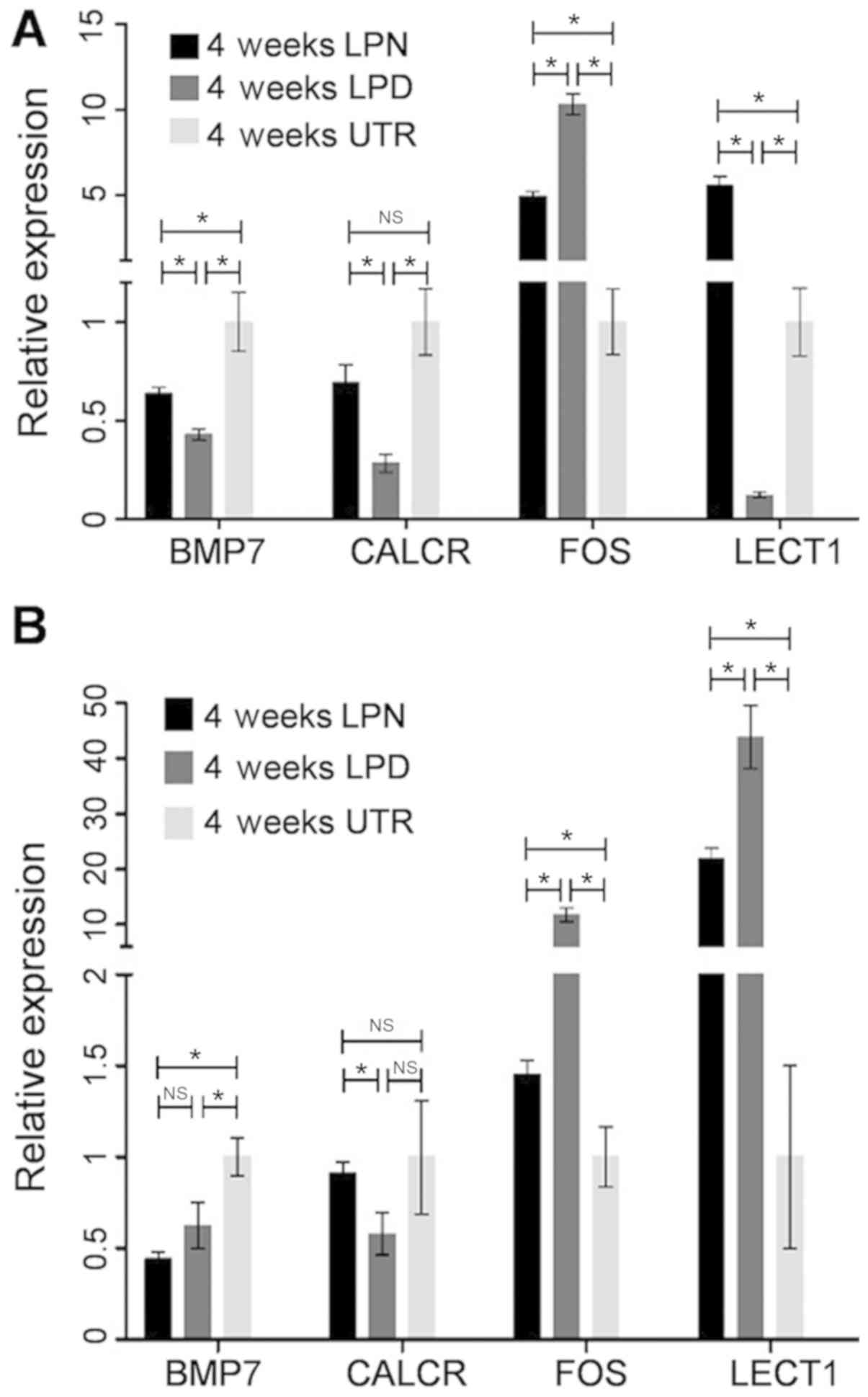|
1
|
Chantaracherd P, John MT, Hodges JS and
Schiffman EL: Temporomandibular joint disorders' impact on pain,
function, and disability. J Dent Res. 94 (Suppl 3):S79–S86. 2015.
View Article : Google Scholar
|
|
2
|
Baykul T, Aydin MA, Nasir SN and Toptas O:
Surgical treatment of posttraumatic ankylosis of the TMJ with
different pathogenic mechanisms. Eur J Dent. 6:318–23.
2012.PubMed/NCBI
|
|
3
|
Arakeri G, Kusanale A, Zaki GA and Brennan
PA: Pathogenesis of post-traumatic ankylosis of the
temporomandibular joint: A critical review. Br J Oral Maxillofac
Surg. 50:8–12. 2012. View Article : Google Scholar : PubMed/NCBI
|
|
4
|
He D, Cai Y and Yang C: Analysis of
temporomandibular joint ankylosis caused by condylar fracture in
adults. J Oral Maxillofac Surg. 72:763.e1–e9. 2014. View Article : Google Scholar
|
|
5
|
Kaban LB, Perrott DH and Fisher K: A
protocol for management of temporomandibular joint ankylosis. J
Oral Maxillofac Surg. 48:1145–1151. 1990. View Article : Google Scholar : PubMed/NCBI
|
|
6
|
Miyamoto H, Kurita K, Ogi N, Ishimaru J
and Goss AN: The effect of an intra-articular bone fragment in the
genesis of temporomandibular joint ankylosis. Int J Oral Maxillofac
Surg. 29:290–295. 2000. View Article : Google Scholar : PubMed/NCBI
|
|
7
|
Meng FW, Zhao JL, Hu KJ and Liu YP: A new
hypothesis of mechanisms of traumatic ankylosis of
temporomandibular joint. Med Hypotheses. 73:92–93. 2009. View Article : Google Scholar : PubMed/NCBI
|
|
8
|
Liu CK, Liu P, Meng FW, Deng BL, Xue Y,
Mao TQ and Hu KJ: The role of the lateral pterygoid muscle in the
sagittal fracture of mandibular condyle (SFMC) healing process. Br
J Oral Maxillofac Surg. 50:356–360. 2012. View Article : Google Scholar : PubMed/NCBI
|
|
9
|
Deng TG, Liu CK, Liu P, Zhang LL, Wu LG,
Zhou HZ, Ding YX and Hu KJ: Influence of the lateral pterygoid
muscle on traumatic temporomandibular joint bony ankylosis. BMC
Oral Health. 16:622016. View Article : Google Scholar : PubMed/NCBI
|
|
10
|
Dai J, Yu H, Zhu M and Shen SG: Injection
of botulinum toxin A in lateral pterygoid muscle as a novel method
for prevention of traumatic temporomandibular joint ankylosis. J
Med Hypoth Ideas. 9:5–8. 2015. View Article : Google Scholar
|
|
11
|
Cheung LK, Shi XJ and Zheng LW: Surgical
induction of temporomandibular joint ankylosis: An animal model. J
Oral Maxillofac Surg. 65:993–1004. 2007. View Article : Google Scholar : PubMed/NCBI
|
|
12
|
Miyamoto H, Kurita K, Ishimaru JI and Goss
AN: A sheep model for temporomandibular joint ankylosis. J Oral
Maxillofac Surg. 57:812–817. 1999. View Article : Google Scholar : PubMed/NCBI
|
|
13
|
Skvortsov D, Abdueva D, Curtis C, Schaub B
and Tavaré S: Explaining differences in saturation levels for
Affymetrix GeneChip arrays. Nucleic Acids Res. 35:4154–4163. 2007.
View Article : Google Scholar : PubMed/NCBI
|
|
14
|
Livak KJ and Schmittgen TD: Analysis of
relative gene expression data using real-time quantitative PCR and
the 2(-Delta Delta C(T)) method. Methods. 25:402–408. 2001.
View Article : Google Scholar : PubMed/NCBI
|
|
15
|
Lopes SL, Costa ALF, Gamba TdO, Flores IL,
Cruz AD and Min LL: Lateral pterygoid muscle volume and migraine in
patients with temporomandibular disorders. Imaging Sci Dent.
45:1–5. 2015. View Article : Google Scholar : PubMed/NCBI
|
|
16
|
Huang DaW, Sherman BT and Lempicki RA:
Systematic and integrative analysis of large gene lists using DAVID
bioinformatics resources. Nat Protoc. 4:44–57. 2009. View Article : Google Scholar : PubMed/NCBI
|
|
17
|
Huang DW, Sherman BT, Tan Q, Collins JR,
Alvord WG, Roayaei J, Stephens R, Baseler MW, Lane HC and Lempicki
RA: The DAVID Gene Functional Classifcation Tool: A novel
biological module-centric algorithm to functionally analyze large
gene lists. Genome Biol. 8:R1832007. View Article : Google Scholar : PubMed/NCBI
|
|
18
|
Huang DW, Sherman BT, Tan Q, Kir J, Liu D,
Bryant D, Guo Y, Stephens R, Baseler MW, Lane HC and Lempicki RA:
DAVID Bioinformatics Resources: Expanded annotation database and
novel algorithms to better extract biology from large gene lists.
Nucleic Acids Res. 35:Web Server issue. W169–W175. 2007. View Article : Google Scholar : PubMed/NCBI
|
|
19
|
Eden E, Navon R, Steinfeld I, Lipson D and
Yakhini Z: GOrilla: A tool for discovery and visualization of
enriched GO terms in ranked gene lists. BMC Bioinformatics.
10:482009. View Article : Google Scholar : PubMed/NCBI
|
|
20
|
Bauer S, Grossmann S, Vingron M and
Robinson PN: Ontologizer 2.0-a multifunctional tool for GO term
enrichment analysis and data exploration. Bioinformatics.
24:1650–1651. 2008. View Article : Google Scholar : PubMed/NCBI
|
|
21
|
Runyan CM and Gabrick KS: Biology of bone
formation, fracture healing, and distraction osteogenesis. J
Craniofac Surg. 28:1380–1389. 2017. View Article : Google Scholar : PubMed/NCBI
|
|
22
|
Li G, Simpson AH and Triffitt JT: The role
of chondrocytes in intramembranous and endochondral ossification
during distraction osteogenesis in the rabbit. Calcif Tissue Int.
64:310–317. 1999. View Article : Google Scholar : PubMed/NCBI
|
|
23
|
Shen G, Rabie AB, Zhao ZH and Kaluarachchi
K: Forward deviation of the mandibular condyle enhances
endochondral ossification of condylar cartilage indicated by
increased expression of type X collagen. Arch Oral Biol.
51:315–324. 2006. View Article : Google Scholar : PubMed/NCBI
|
|
24
|
Bradaschia-Correa V, Barrence FA, Ferreira
LB, Massa LF and Arana-Chavez VE: Effect of alendronate on
endochondral ossification in mandibular condyles of growing rats.
Eur J Histochem. 56:e242012. View Article : Google Scholar : PubMed/NCBI
|
|
25
|
Lewinson D, Rachmiel A, Rihanibisharat S,
Kraiem Z, Schenzer P, Korem S and Rabinovich Y: Stimulation of Fos-
and Jun-related genes during distraction osteogenesis. J Histochem
Cytochem. 51:1161–1168. 2003. View Article : Google Scholar : PubMed/NCBI
|
|
26
|
Mieczkowski J, Tyburczy ME, Dabrowski M
and Pokarowski P: Probe set filtering increases correlation between
Affymetrix GeneChip and qRT-PCR expression measurements. BMC
Bioinformatics. 11:1042010. View Article : Google Scholar : PubMed/NCBI
|
|
27
|
Ishii M, Hashimoto S, Tsutsumi S, Wada Y,
Matsushima K, Kodama T and Aburatani H: Direct comparison of
GeneChip and SAGE on the quantitative accuracy in transcript
profiling analysis. Genomics. 68:136–143. 2000. View Article : Google Scholar : PubMed/NCBI
|
|
28
|
Juang JL, Chen TC, Jiang SS, Hsiung CA,
Chen WC, Chen GW, Lin SM, Lin JH, Chiu SC and Lai YK: Coupling
multiplex RT-PCR to a gene chip assay for sensitive and
semiquantitative detection of severe acute respiratory
syndrome-coronavirus. Lab Invest. 84:1085–1091. 2004. View Article : Google Scholar : PubMed/NCBI
|













